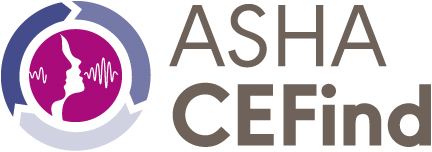Search for courses offered for ASHA CEUs that meet your educational and professional goals. Courses listed here are offered by ASHA Approved Continuing Education Providers.
Search for courses
Disclaimer: ASHA approves CE Providers not courses. This approval does not imply endorsement of course content, specific products or clinical procedures. Every attempt is made to ensure the accuracy of information in ASHA CEFind. It is your responsibility to contact the CE Provider to verify specific information about a course. ASHA does not accept responsibility for any inaccurate information listed in ASHA CEFind.

